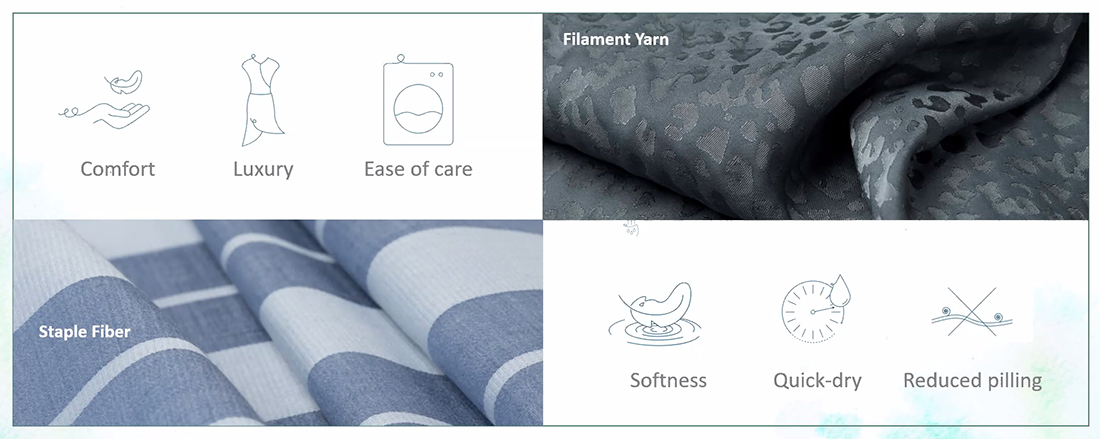Eastman, the producer of sustainably sourced Naia cellulosic fiber, introduced its new Naia Renew portfolio, sourced from 60% wood pulp and 40% recycled waste plastics*. Naia Renew cellulosic fiber is traceable with certified biodegradability that captures the value of hard-to-recycle materials that would otherwise be destined for landfills. It can be produced at scale to deliver sustainability without compromise to the fashion world.
“Naia Renew enables a circular economy for the fashion industry and helps brands meet their eco-conscious goals,” said Ruth Farrell, global marketing director of textiles for Eastman. “We’re transforming what a fabric can be and do to meet the sustainability demands of our customers and to create a world where brands and consumers can be in fashion without compromising on quality and performance.”
Naia Renew is available as both a filament yarn and a staple fiber. Naia Renew filament features a silky hand, rich luster and fluid drape and is used to create fashionable womenswear garments, while Naia Renew staple fiber is inherently soft and quick drying, with reduced pilling properties, making it ideal for everyday casual wear.
Fully circular, Naia Renew is produced with a low carbon footprint in a closed-loop process where solvents are safely recycled back into the system for reuse. The fiber is made from wood pulp sourced from certified forests, and the recycled plastics feedstock is generated via Eastman’s patented carbon renewal technology (CRT). CRT is an integrated, molecular recycling technology that breaks down waste plastics, such as post-consumer carpet fiber and plastic packaging materials into basic molecular building blocks for the manufacture of new products including fibers – a truly circular solution creating value from waste.
* Naia™ Renew recycled content is achieved by allocation of recycled plastics through mass balance accounting.


